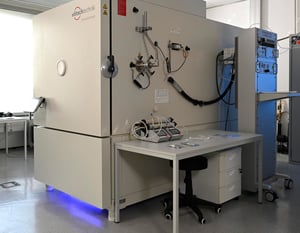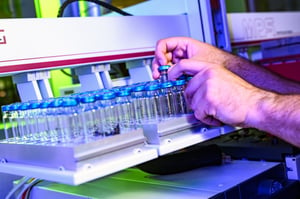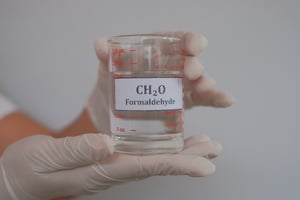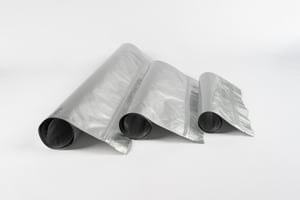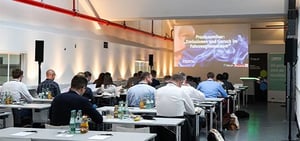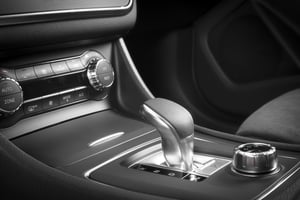
Fogging
Determination of the fogging behavior of materials used in vehicle interiors
FOGGING TEST IN THE
AUTOMOBILE INTERIOR
TESTING STANDARDS AS THE KEY TO QUALITY ASSURANCE
In the automotive industry, ensuring electrical safety and compliance with standards is of central importance. Various test standards and norms play a decisive role in this context. These are designed to guarantee the safety, reliability and performance of electrical systems in vehicles.
We support manufacturers in achieving the highest standards and ensuring that their vehicles are not only safe, but also reliable and durable. The comprehensive testing procedures help to increase customer confidence and continuously improve quality in the automotive sector.
Test methods and procedures
In order to meet the requirements of the individual standards and IP classifications, we use state-of-the-art technologies and procedures in our test laboratory:
- Mechanical tests: These include vibration tests, shock tests and temperature cycling tests to check the physical robustness of the components.
- Electrical tests: Tests to check insulation resistance, leakage currents and short circuits are essential to ensure electrical safety.
- Environmental simulation: We use climatic tests to simulate extreme conditions in order to test the reliability and service life of the components.

Test methods and standards
- VW 80000
- LV 124 (MBN50306 / MBN 10567 )
- GS 95024-2
- IP tests
Fogging test methods
- DIN 75201-A (reflectrometric)
- DIN 75201-B (gravimetric)
- PV 3015 (Volkswagen)
- GMW 3235-A (General Motors Worldwide)
- PSA D45 1727
- and much more.
Are you looking for an exam? Standard? Specifications?
Accredited & certified tests
CONTACT OUR EXPERTS
Description. Lorem ipsum dolor sit amet, consetetur sadipscing elitr, sed diam nonumy eirmod tempor invidunt ut labore et
- Tab Title






- Standard VW 80000
- MBN 50306 / MBN 10567
- GS 95024-2
- IP tests
Standard VW 80000
The VW 80000 standard is an important part of the quality and safety standards defined by the Volkswagen Group for electrical and electronic components. This standard defines specific requirements for the design, materials and test criteria to ensure that the electrical systems in vehicles function under various conditions. The focal points of VW 80000 include:
- Insulation safety: the standard requires comprehensive insulation strength testing to ensure that no electrical breakdowns occur, thus ensuring the safety of occupants.
- Environmental resistance: Components must be designed to withstand extreme temperatures, humidity and chemical influences that can occur during driving.
- Durability and reliability: Long-term testing is required to ensure that components continue to operate reliably throughout the life of the vehicle.
MBN 50306 / MBN 10567 (formerly LV124)
MBN 50306 / MBN 10567, formerly known as LV 124, are German standards that place specific requirements on electrical and electronic components in vehicles. They serve to ensure the functionality and durability of these components under the extreme conditions of automotive operation.
The standards define test conditions and tests that ensure that components such as cables, plug connections, control units and sensors can withstand the tough demands of everyday vehicle use.
These include tests on
- Temperature resistance
- Influence of moisture
- Vibration resistance
- Electromagnetic compatibility (EMC )
GS 95024-2
GS 95024-2 is a standard for electrical wiring in vehicles. It defines safety requirements and test methods for cables, wires and electrical components in order to prevent fire hazards, short circuits and malfunctions .
Manufacturers must ensure that their electrical systems meet the specified safety and quality standards in order to guarantee the safety and reliability of vehicles.
The most important test methods include
- Dielectric strength test
- Heat resistance test
- Short circuit test
- Mechanical stress tests
- Insulation test
- Fire behavior test
IP tests
-
The IP (Ingress Protection) tests are another important aspect of electrical safety. These tests classify the degree of protection of enclosures against the ingress of solid foreign bodies and water. The IP classification consists of two digits that indicate the protection against dust and water. The following aspects are particularly relevant in the automotive industry:
- Dust-tightness: Components must be dust-tight to ensure functionality and longevity, especially in environments with a lot of dirt and dust.
- Watertightness: Vehicles are exposed to various weather conditions. Therefore, electrical systems must be designed to be protected against splashing water and temporary submersion.
- Dust-tightness: Components must be dust-tight to ensure functionality and longevity, especially in environments with a lot of dirt and dust.
Frequently asked questions about the fogging test
The sample quantities required for a fogging test depend on the standard and the test method used. Here are the general guidelines:
1. standard DIN 75201 (type A and type B)
-
Type A (glass plate method):
A sample quantity of 10 cm² is typically required. The sample is placed on a heated plate in a sealed chamber and the volatiles released condense on a glass plate above. -
Type B (aluminum foil method):
Similar to type A, a sample volume of approximately 10 cm² is used. However, the volatile substances condense on a cooled aluminum foil.
2. standard ISO 6452 (international standard)
- Sample quantity:
Again, a sample size of approximately 10 cm² is typically required to evaluate the amount of volatiles released at elevated temperature.
3. other specific requirements
Depending on the specific requirements of the customer or OEM standards, sample quantities may vary. It is important to check the respective standards or test requirements carefully.
Method A - Reflectometric method:
- Principle: This method measures the change in reflectivity on a glass plate on which volatile components from the material sample are deposited.
- Procedure: A material sample is heated in a beaker while a glass plate above it is cooled to 21°C. The temperature difference causes the volatile components to condense on the glass plate. The reflectance index of the fogged glass plate is then measured to determine the amount of condensed material.
- Application: This method is particularly suitable for materials for which an exact determination of the optical fog effect is required.
Method B - Gravimetric method:
- Principle: This method measures the weight of condensed volatiles on an aluminum foil.
- Procedure: The material sample is heated in a beaker while an aluminum foil disc is cooled to 21°C. After 16 hours, the amount of condensed material on the foil is weighed.
- Application: This method is ideal for an accurate quantitative determination of the amount of condensed volatiles.
CONTACT US
EMISSIONS & ODOR
Formaldehyd in Fahrzeugen: Herausforderungen für die Automobilindustrie
Read moreStellantis: Freigabe für Emissionsprüfungen erfolgreich (VIAQ)
Read moreVDA 277 vs. VDA 278: Was ist der Unterschied?
Read moreGeruchsunterschiede bei Polypropylen: Die Rolle von Faserverstärkung und Verarbeitungsparametern
Read moreWarum sind die Einheiten der Ergebnisse von Prüfungen der Werkstoffemissionen eigentlich so unterschiedlich?
Read moreGrenzwerte für Formaldehyd und Formaldehydabspaltern in Fahrzeugen
Read moreFREQUENTLY ASKED QUESTIONS ABOUT ELECTRICAL SAFETY TESTING
The electrical safety test ensures that a vehicle's electrical systems work safely and reliably. It checks whether cables, plug connections, batteries and control units are correctly installed and insulated. The aim is to avoid risks such as short circuits, overheating or electric shocks.
- Mechanical tests: These include vibration tests, shock tests and temperature cycling tests to check the physical robustness of the components.
- Electrical tests: Tests to check insulation resistance, leakage currents and short circuits are essential to ensure electrical safety.
- Environmental simulation: We use climatic tests to simulate extreme conditions in order to test the reliability and service life of the components.


